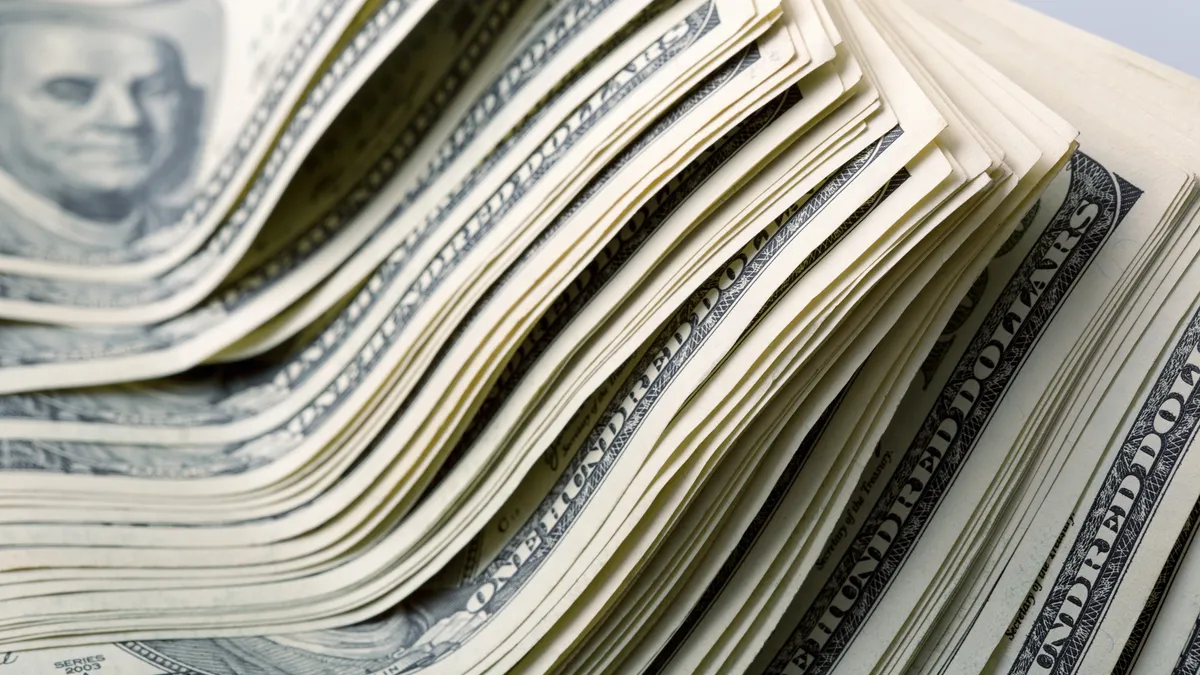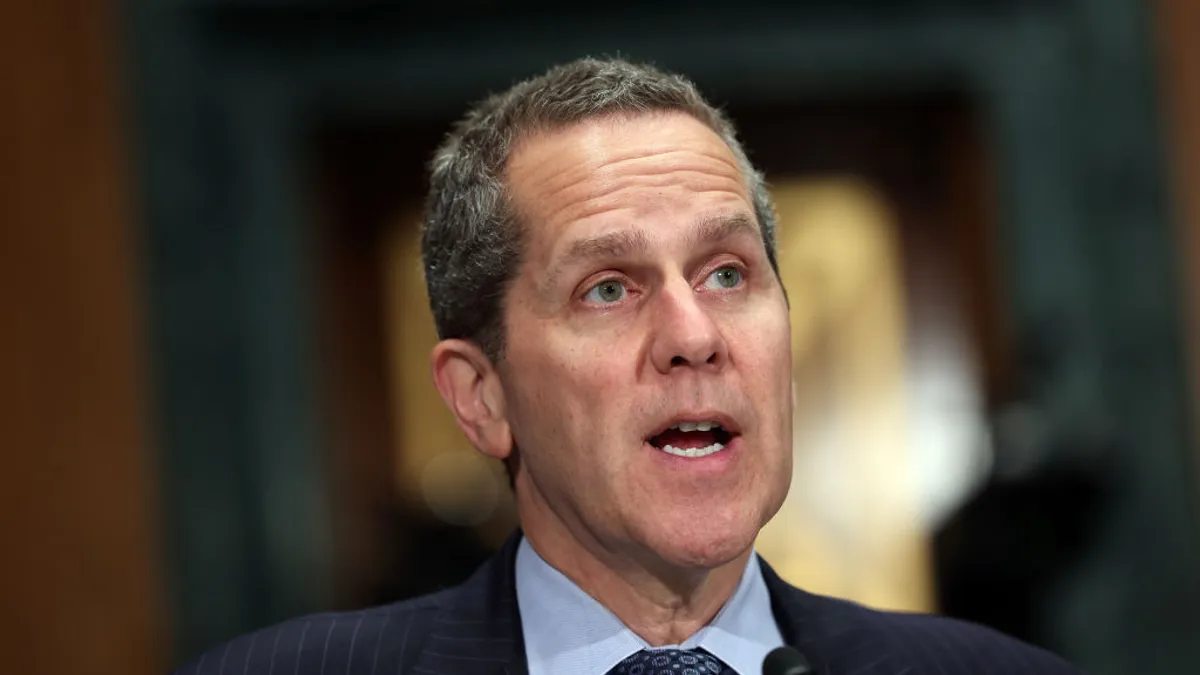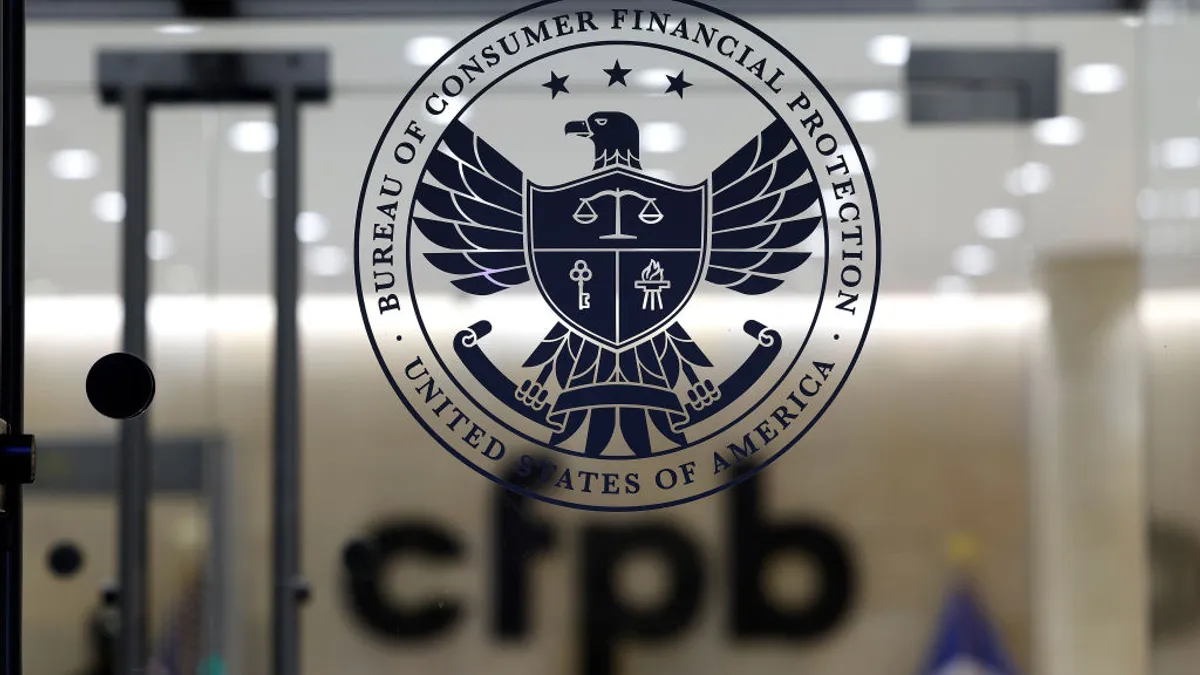Employees at the nation's six largest banks got an average raise of $271 in 2020, Bloomberg reported Thursday. Even for someone making $50,000 a year, that comes out to a pay bump of half a percentage point. And the penny pinching appears steady up and down the corporate ladder.
JPMorgan Chase is keeping CEO Jamie Dimon's $31.5 million compensation package unchanged, according to a regulatory filing posted Thursday. That breaks down to a $1.5 million base salary, a $5 million cash bonus and $25 million in "performance share units" whose value varies with that of the company's stock.
JPMorgan is the first of the major U.S. banks to report executive pay this year, so it remains to be seen how compensation stacks up for the leaders of Bank of America, Citi, Goldman Sachs, Morgan Stanley and Wells Fargo during a pandemic year that saw banks squirrel away billions of dollars in loan loss reserves.
Yet several of the same banks ended 2020 on a high. Trading revenue at Goldman Sachs reached a 10-year peak in the fourth quarter, and the bank's profit more than doubled from a year earlier, according to The Wall Street Journal. JPMorgan's annual profit fell 20% in 2020 — to $29.1 billion from $36.4 billion — but the bank made more money in the fourth quarter than in any previous three-month span, Bloomberg reported.
Still, big payouts would make for bad optics, consultant Mayra Rodriguez Valladares told the wire service. "The more you reward the big lenders, the big traders, they take on more risk," she said.
Goldman would know something about that. The bank drew flak last year for bucking the CEO compensation trend, giving David Solomon a 20% raise in 2019, when Bank of America and Citi stood pat and Morgan Stanley's James Gorman took a 7% cut. It was, however, Solomon's first full year at the helm — and transitions often beget big bumps in compensation. Wells Fargo's Charlie Scharf leapfrogged Dimon last year as the banking sector's top-paid CEO, according to S&P Global figures, on the back of a "make-whole award" intended to replace perks Scharf would have reaped had he not left BNY Mellon.
Likewise, looking at compensation for JPMorgan's other top executives — also published Thursday — the ones who transitioned to new roles saw the largest jumps. Jennifer Piepszak's compensation increased 20% to $12 million in her first year as CFO, according to Reuters. Daniel Pinto, CEO of JPMorgan's corporate and investment bank, saw a 9% increase to $24.5 million. Pinto was one of two co-presidents who ran the bank's daily operations in March and April, while Dimon was recovering from emergency heart surgery. Three of the four other JPMorgan execs whose compensation was published Thursday saw no increase.
Cut bonuses
Citi, for its part, is cutting bonuses for dozens of its top executives, Bloomberg reported this week, citing an anonymous source. The move may be a reaction to the reprimand and $400 million fine regulators handed the bank in October over its risk management practices. A Federal Reserve-issued cease-and-desist order gives Citi's board of directors 120 days — the period ends early next month — to submit a report detailing how it will hold senior management accountable and make executive compensation "consistent with risk management objectives."
Elsewhere in the sector, revenue generated per employee far outweighed any bumps in pay. Goldman's workforce saw an average 2% raise despite a 15% jump in revenue per employee, Bloomberg found. At JPMorgan's investment bank, those figures were 1% and 22%, according to the wire service.
Five of the six largest U.S. banks — all but Wells Fargo — spent more in total compensation last year than the year before, Bloomberg found. However, they're also taking in more revenue — and the proportion of that revenue they're putting toward compensation is decreasing. Goldman, for example, spent 30% of its revenue on compensation last year, down from about 34%. Meanwhile, JPMorgan's investment bank spent 24%, down from 28%, according to earnings reports released over the past week.
Toward the end of last year, both banks were considering boosting variable compensation for traders by up to 20%. Senior executives at Bank of America, meanwhile, proposed keeping the bonus pool for sales and trading at 2019's levels despite a 20% boost in revenue at the bank during the first nine months of 2020.
An extra $750
The Charlotte, North Carolina-based lender announced Thursday, however, it plans to give a little extra to its rank and file. Eligible employees who earn $100,000 or less per year will get a $750 bonus for their work throughout the pandemic, CEO Brian Moynihan said in a memo, according to Bloomberg. Higher-paid employees, meanwhile, will receive a stock award.
"Our company and teammates were called upon to address unprecedented challenges," Moynihan wrote. "This move is the next step our company is taking to significantly invest in health, safety, benefits and other resources to support you during this global health and humanitarian crisis."
The bonus, however, marks a decrease from the $1,000 sums employees received each year between 2017 and 2019. Bank of America reported a net income of nearly $18 billion in 2020, a 35% downturn from the previous year.
Narrowing the gap
Citi, meanwhile, kept its eye on its pay equality goals. The bank in 2018 became the first in the U.S. to report raw data on pay gaps between men and women. Female employees now make 26% less than male employees do, Sara Wechter, Citi's head of human resources, wrote Thursday in a blog post. That's down from 27% last year and 29% in the first year of reporting.
"It keeps me up at night because I know it's a lot of work, but we've got to be delivering against these things," Wechter told Bloomberg. "This is going to take years to get right, but if we're not making progress along the way, then it's going to take longer than years."
An ad campaign Citi launched in 2019 to bring awareness to the pay gap between men and women predicted it would not close until 2227 without intervention.
The bank's data also looks across racial lines, and there, nonwhites earn about 6% less than whites, similar to last year's results.
"I think that it's really important that we are constantly showing people the numbers — the improvement, the lack of improvement, whatever it may be — so they can make sure to try to solve for it," Wechter said.






















